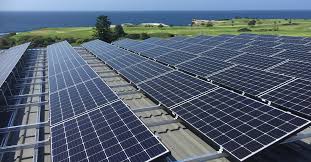A new technique for cooling solar panels has been under development in Egypt. A mixture of water, aluminum oxide, and calcium chloride hexahydrate cools the PV modules from underneath.
This research, conducted in Cairo, builds on earlier research this spring that France’s Sunbooster was exploring. The technology found success and was able to cool down solar modules when their ambient temperature exceeded 25°C. Pipes spread a thin film of water onto the glass surface of the panels. The solution was implemented in rooftop solar PV systems and ground-mounted solar power plants. The technology enables an annual increase in power generation of between 8% and 12%.
Regarding the innovation in Egypt, researchers at Benha University applied various mixtures of their passive coolants to a 50 W polycrystalline PV panel. A cooling unit, DC pump, valves, water flow meter and connecting pipes provided a system with aluminum channels underneath the panels for the water and the Al2O3/PCM mixture. The panels were south adjusted and oriented 30 degrees from horizontal.
How It Works
The PCM mixture was heated to melting point to form a liquid and Al2O3 nanoparticles were added to it in the aluminum channels. “The dispersion of particles in the PCM liquid is done using an agitator bath with four different mass concentrations,” the group stated.
“Applying the cooling system, whether using water and/or [the] Al2O3/PCM mixture provides a noticeable drop in cell temperature compared with the uncooled [panel],” said the Egyptian team.
The researchers said a mixture of water and the Al2O3/PCM liquid outperformed the use of water alone and the best performance recorded used 75% water and 25% Al2O3/PCM.
The research findings are explained in more detail in the paper “Performance enhancement of the photovoltaic cells using Al2O3/PCM mixture and/or water cooling-techniques,” published in the journal Renewable Energy.
Whether this is a cost effective solution — allowing for enough extra revenue through greater energy production (thanks to greater efficiency) than the solution costs — is not discussed. Assuming it is cost effective in some regions, those would presumably be places that get quite hot.

 Iran Energy News Oil, Gas, Petrochemical and Energy Field Specialized Channel
Iran Energy News Oil, Gas, Petrochemical and Energy Field Specialized Channel



